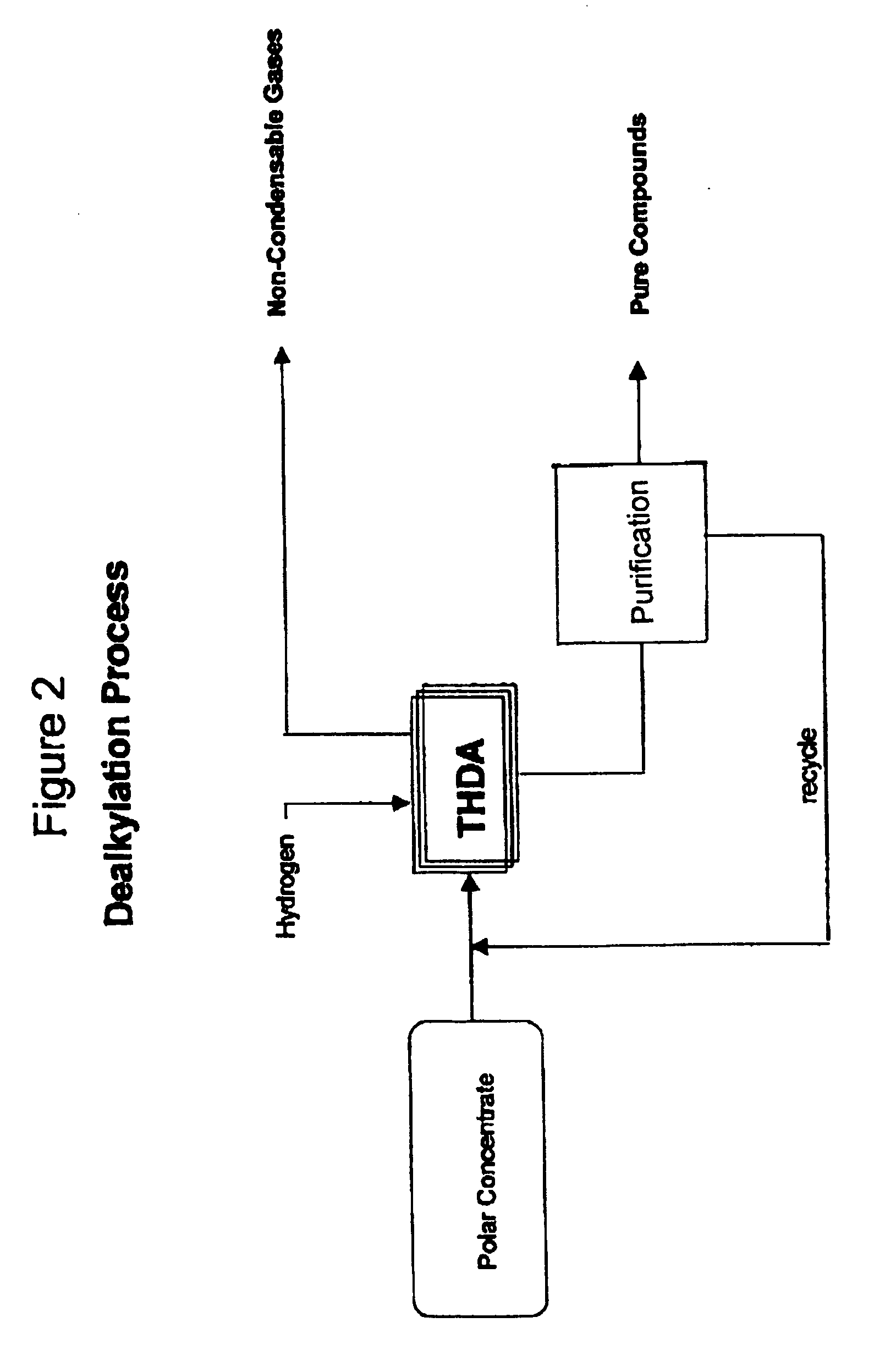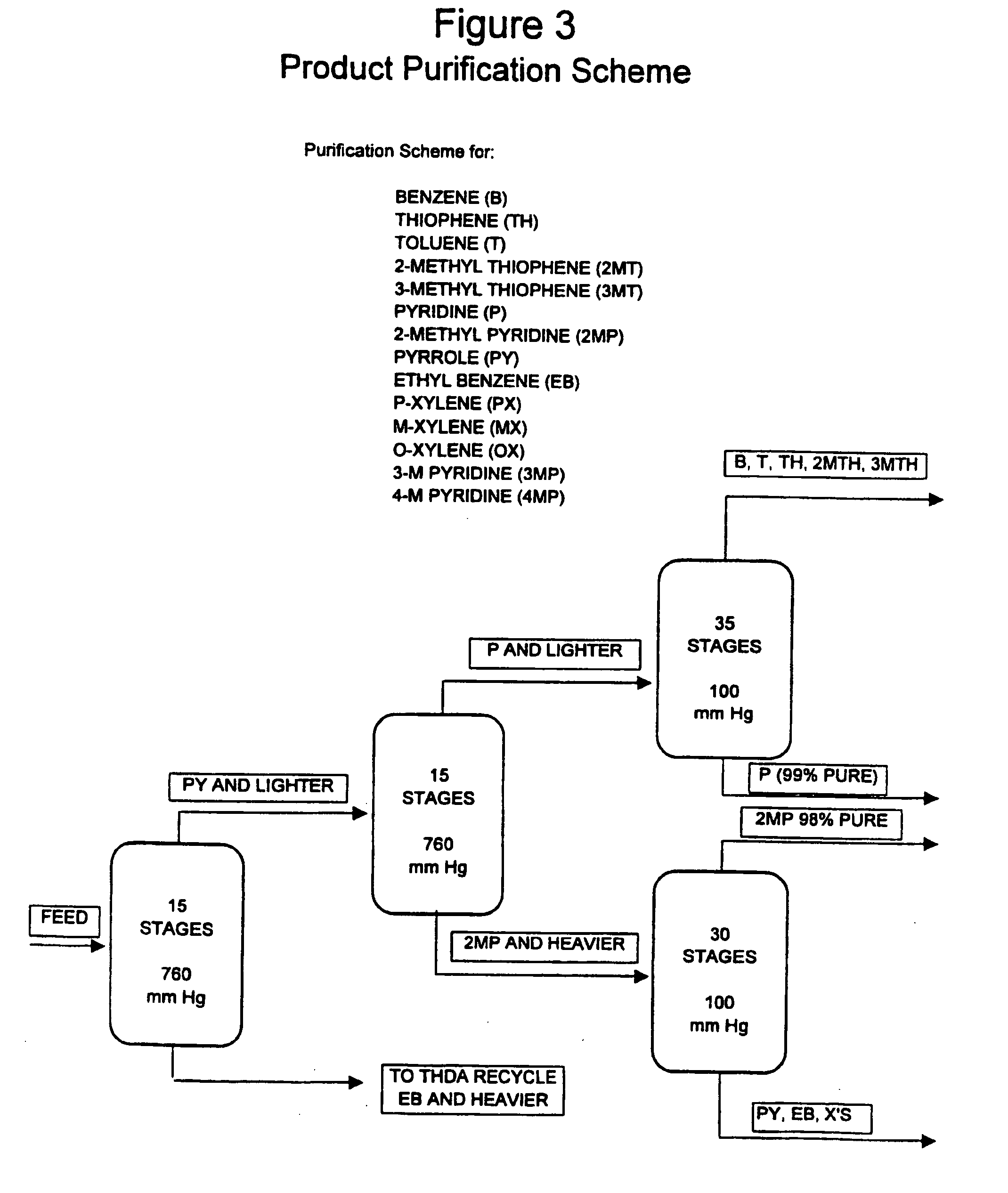Process for enhancing the value of hydrocarbonaceous natural resources
a technology of hydrocarbonaceous natural resources and hydrocarbon oil, which is applied in the direction of hydrocarbon distillation, hydrocarbon oil treatment, hydrocarbon oil refining control/regulation, etc., can solve the problems of inability to adapt to the current system, and inability to meet the needs of the market, so as to reduce the total process throughput and reduce the margin of high-value products. the effect of little or no value in the mark
- Summary
- Abstract
- Description
- Claims
- Application Information
AI Technical Summary
Benefits of technology
Problems solved by technology
Method used
Image
Examples
Embodiment Construction
[0040] Oils for treatment by the invention are those derived by extraction or heat treatment of carbonaceous materials, e.g., oil shale, oil sands, tar sands, coal, gilsonite or biomass.
Definition of Oils
[0041]“Oil shale consists of a marlstone-type sedimentary inorganic material that contains complex organic polymers that are high molecular weight solids. The organic kerogen is a three-dimensional polymer, insoluble in conventional organic solvents, and associated with small amounts of a benzene-soluble organic material, bitumen . . . Oil shale deposits occur widely throughout the world [and] the geology and the composition of inorganic and organic components of oils shale varies with deposit location.” Kirk-Othmer, Concise Encyclopedia of Technology, 1985 (John Wiley & Sons).
[0042] Oil sands, also known as tar sands or bituminous sands, are sand deposits impregnated with dense, viscous petroleum. In the United States “Tar sand is any consolidated or unconsolidated rock (other ...
PUM
| Property | Measurement | Unit |
|---|---|---|
| dipole moment | aaaaa | aaaaa |
| viscosity | aaaaa | aaaaa |
| softening point | aaaaa | aaaaa |
Abstract
Description
Claims
Application Information
 Login to View More
Login to View More - R&D
- Intellectual Property
- Life Sciences
- Materials
- Tech Scout
- Unparalleled Data Quality
- Higher Quality Content
- 60% Fewer Hallucinations
Browse by: Latest US Patents, China's latest patents, Technical Efficacy Thesaurus, Application Domain, Technology Topic, Popular Technical Reports.
© 2025 PatSnap. All rights reserved.Legal|Privacy policy|Modern Slavery Act Transparency Statement|Sitemap|About US| Contact US: help@patsnap.com



